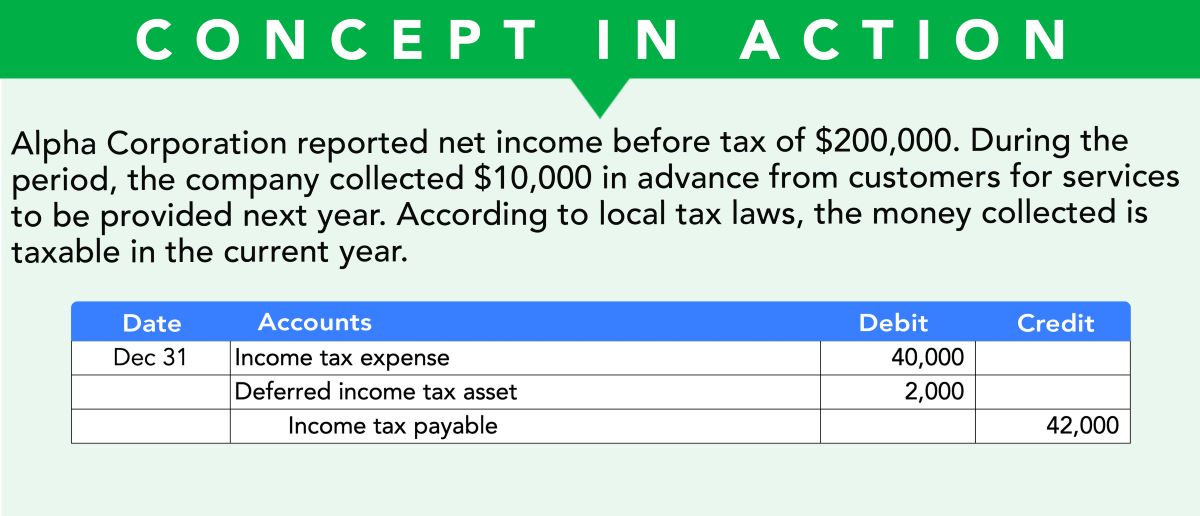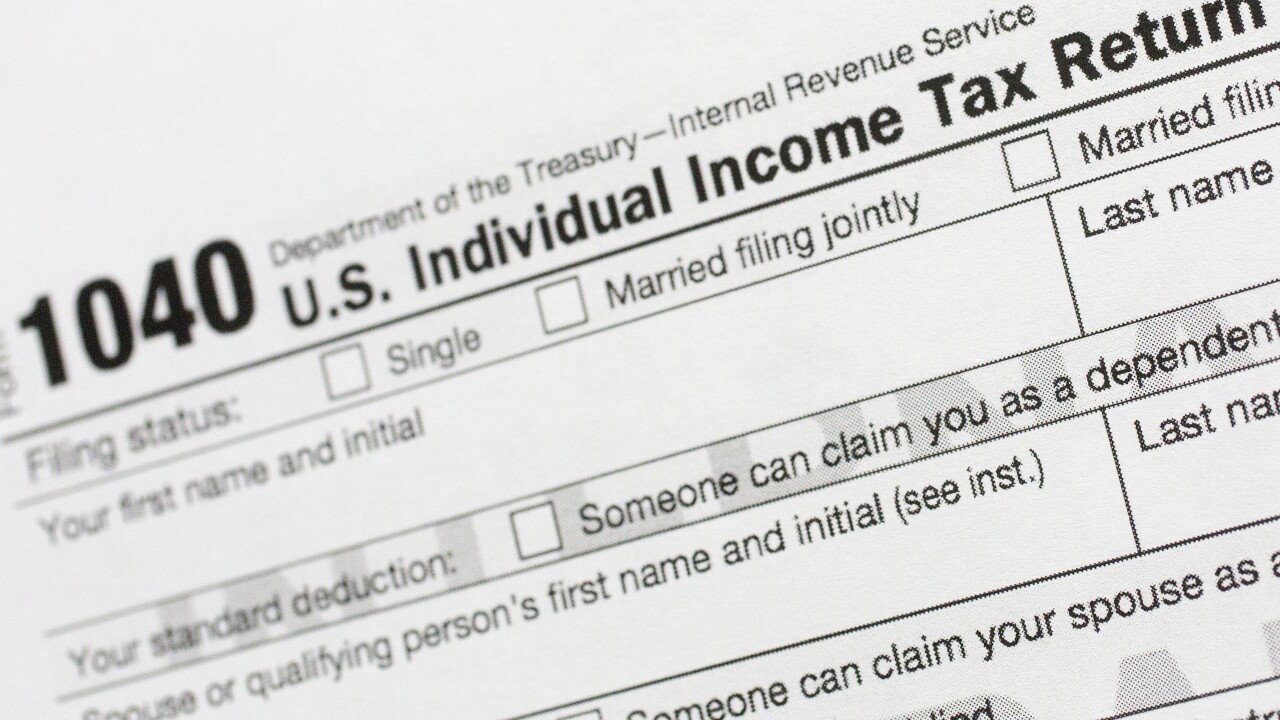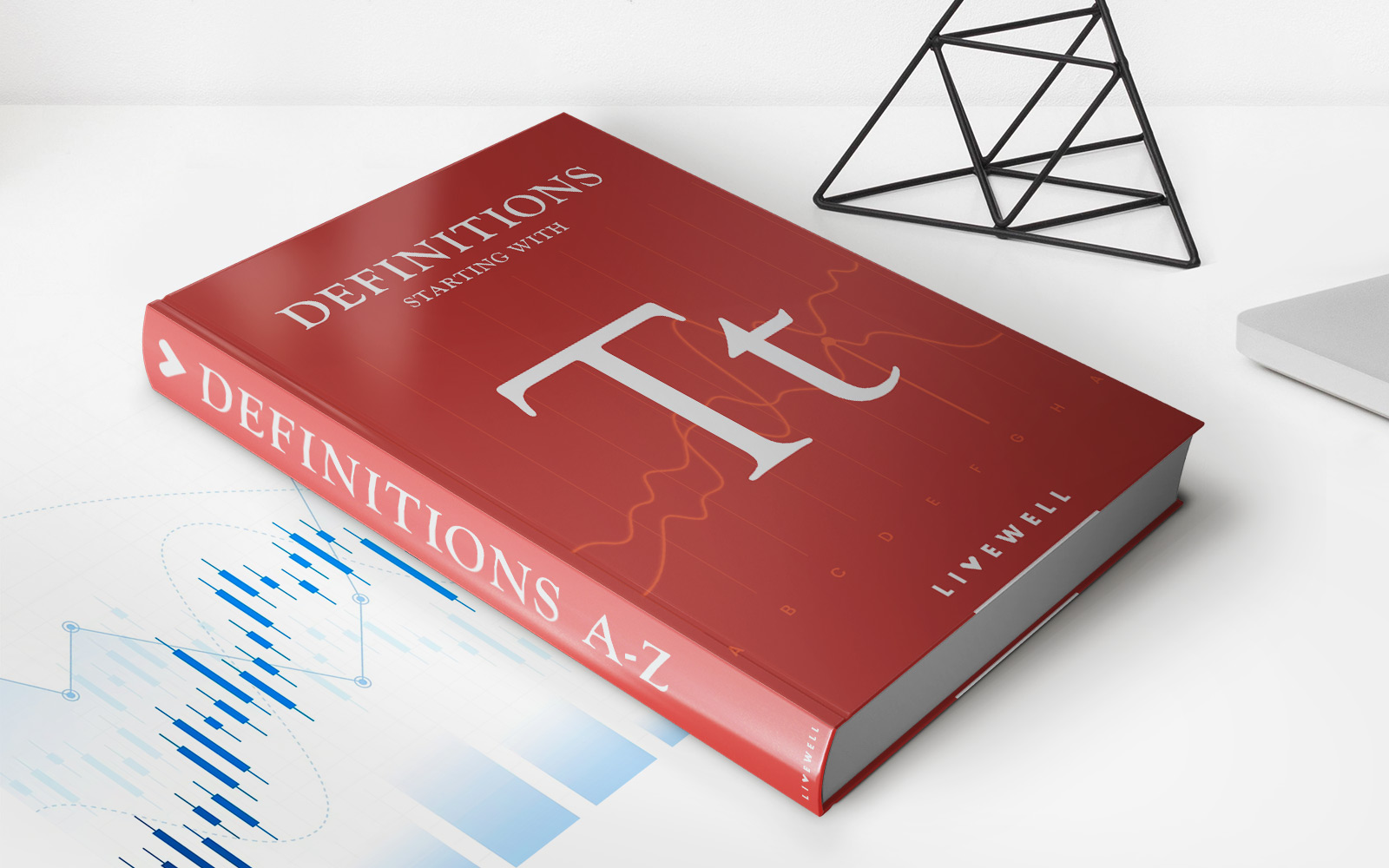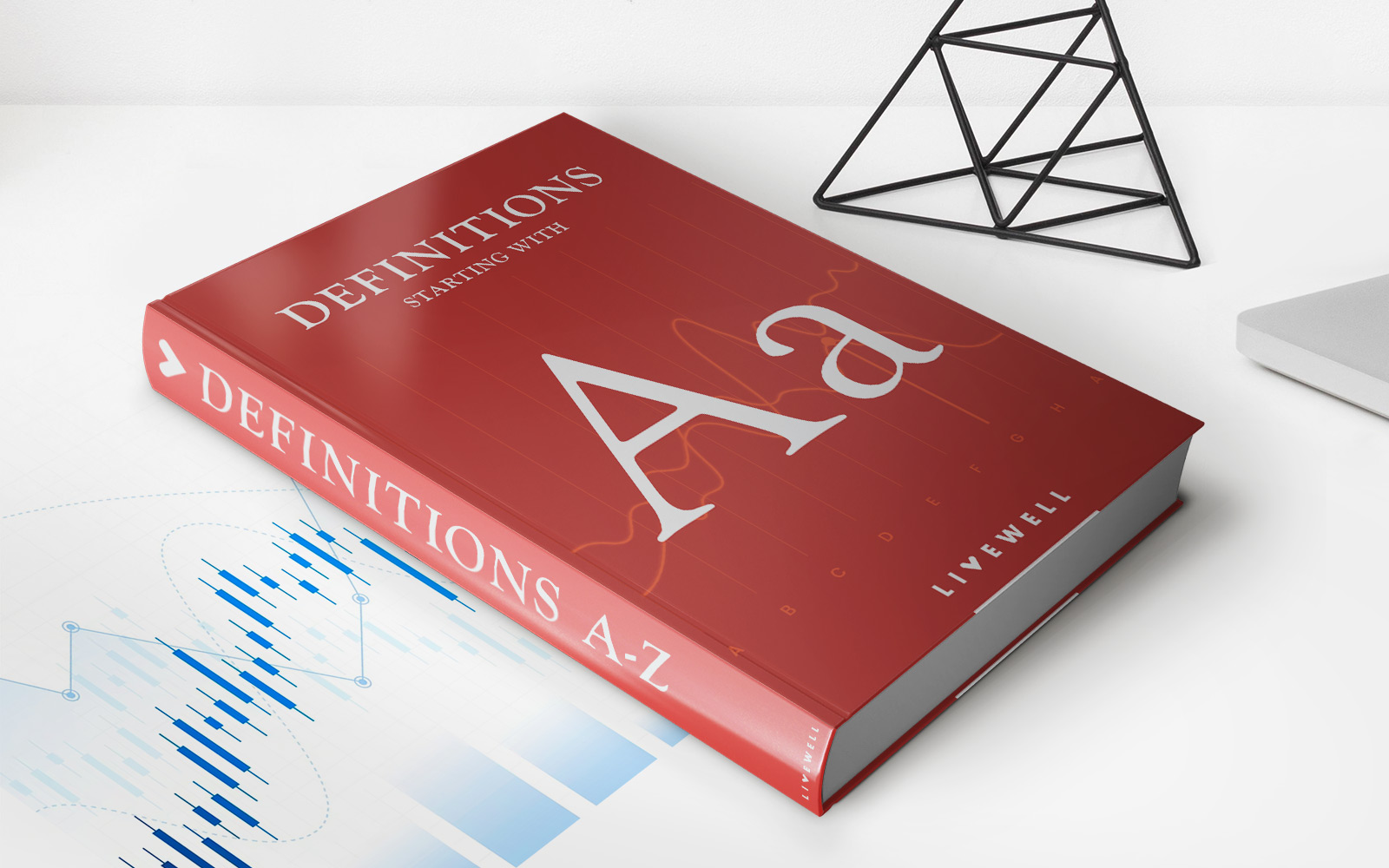

Finance
What Is Federal Income Tax On $130 000
Modified: February 21, 2024
(Many of the links in this article redirect to a specific reviewed product. Your purchase of these products through affiliate links helps to generate commission for LiveWell, at no extra cost. Learn more)
Table of Contents
Introduction
When it comes to understanding the complex world of finance, one important aspect that individuals and businesses alike have to deal with is federal income tax. It plays a significant role in the overall financial landscape, dictating the amount of money individuals and businesses need to contribute to the government. In this article, we will explore the concept of federal income tax and shed light on how it impacts individuals earning $130,000 annually.
Federal income tax refers to the tax imposed by the United States federal government on individuals and entities based on their income. It is the primary source of revenue that funds various federal programs and initiatives. Understanding how federal income tax works is crucial for financial planning, as it directly affects an individual’s overall financial well-being.
For individuals earning $130,000 annually, navigating the federal income tax system becomes essential to ensure compliance and minimize tax liability. To grasp the intricacies of federal income tax on this income level, we will delve into the calculations, factors that impact tax liability, and deductions and credits that can potentially reduce the tax burden.
By gaining a comprehensive understanding of federal income tax on $130,000, individuals can make informed financial decisions, optimize their tax situation, and ultimately have greater control over their financial outcomes.
Understanding Federal Income Tax
Federal income tax is a progressive tax system in the United States, meaning that the tax rate increases as a person’s income rises. It is based on the principle of ability to pay, where individuals with higher incomes are taxed at higher rates.
The federal income tax system operates on a marginal tax rate structure. This means that different portions of an individual’s income are taxed at different rates. The tax rates are divided into income brackets, with each bracket corresponding to a specific range of taxable income.
For example, let’s say the tax brackets for the current year are 10%, 15%, 25%, 28%, and 33%. If an individual’s taxable income falls within the 10% bracket, they will be taxed at a rate of 10% on that portion of their income. As their income increases and reaches the next bracket, only the portion of income within that bracket will be taxed at the corresponding rate.
It is also worth noting that the federal tax system allows for certain deductions and credits, which can potentially reduce an individual’s overall tax liability. Deductions are expenses that can be subtracted from the total taxable income, while credits directly reduce the amount of tax owed.
Understanding how federal income tax works is crucial not only to comply with tax laws and regulations but also to make informed financial decisions. By being aware of the tax brackets and the progressive nature of the system, individuals can strategize their income and deductions to minimize their overall tax burden.
In the next section, we will calculate the federal income tax on an annual income of $130,000 and explore the factors that can affect the tax liability for individuals in this income range.
Calculation of Federal Income Tax on $130,000
Now, let’s calculate the federal income tax on an annual income of $130,000.
To determine the tax liability, we need to consider the applicable tax brackets and the corresponding tax rates. The tax brackets are subject to change each year, so it’s important to refer to the latest tax rate schedule provided by the Internal Revenue Service (IRS).
For simplicity, let’s assume the tax rates for the current year are as follows:
- 10% on the first $9,950 of taxable income
- 12% on taxable income between $9,951 and $40,525
- 22% on taxable income between $40,526 and $86,375
- 24% on taxable income between $86,376 and $130,000
To calculate the federal income tax on $130,000, we need to determine the portion of income that falls within each tax bracket and apply the corresponding tax rate. Here’s how the calculation would look:
Step 1: Determine the amount of income in each tax bracket:
- 10% bracket: $9,950 (maximum income in the bracket) – $9,950 (minimum income in the bracket) = $0
- 12% bracket: $40,525 (maximum income in the bracket) – $9,950 (maximum income in the previous bracket) = $30,575
- 22% bracket: $86,375 (maximum income in the bracket) – $40,525 (maximum income in the previous bracket) = $45,850
- 24% bracket: $130,000 (total income) – $86,375 (maximum income in the previous bracket) = $43,625
Step 2: Calculate the tax for each bracket:
- 10% bracket: $0 x 10% = $0
- 12% bracket: $30,575 x 12% = $3,669
- 22% bracket: $45,850 x 22% = $10,087
- 24% bracket: $43,625 x 24% = $10,470
Step 3: Add up the taxes from each bracket:
$0 + $3,669 + $10,087 + $10,470 = $24,226
Therefore, the federal income tax on an annual income of $130,000 would be approximately $24,226.
It’s important to note that this is a simplified calculation and does not take into account any deductions, credits, or other factors that may affect an individual’s tax liability. The actual tax amount can vary based on individual circumstances, so consulting with a tax professional or using tax software is recommended for a more accurate estimation.
Next, we will explore the factors that can impact federal income tax liability on an income of $130,000.
Factors Affecting Federal Income Tax Liability
Several factors can impact an individual’s federal income tax liability, especially when earning $130,000 annually. Understanding these factors is crucial for effective tax planning and optimizing one’s financial situation. Let’s explore some of the key factors that can affect federal income tax liability:
1. Filing Status: The filing status chosen by an individual, such as single, married filing jointly, married filing separately, or head of household, can have a significant impact on tax liability. Each filing status has its own set of tax brackets and deductions, which can result in varying tax obligations.
2. Dependents: Having dependents, such as children or other qualifying individuals, can potentially lead to tax benefits, including the child tax credit, dependent care credit, and the ability to claim additional exemptions. These benefits can reduce the overall tax liability for individuals earning $130,000 a year.
3. Deductions: Utilizing deductions can reduce taxable income. Some common deductions include mortgage interest, state and local taxes, medical expenses, and charitable contributions. It’s important to keep track of eligible deductions and claim them appropriately to lower federal income tax liability.
4. Retirement Contributions: Contributions to retirement accounts, such as a 401(k) or Individual Retirement Account (IRA), can have a dual benefit. Not only do these contributions help individuals save for retirement, but they can also reduce taxable income, thereby lowering federal income tax liability.
5. State and Local Taxes: The amount of state and local taxes paid can impact federal income tax liability. Some states allow individuals to deduct state and local taxes paid from their federal taxable income.
6. Education Expenses: Individuals earning $130,000 a year may have education-related expenses, such as tuition, student loan interest, and education-related credits. Certain education-related deductions and credits can help reduce federal income tax liability.
7. Health Care Costs: Medical expenses that exceed a certain threshold can be deducted from taxable income, potentially reducing federal income tax liability. Additionally, individuals who have health insurance coverage through the Affordable Care Act may qualify for premium tax credits.
It’s important to understand that these factors interact with each other and can have varying impacts on federal income tax liability. Consulting with a tax professional can help individuals navigate these complexities and make informed decisions to optimize their tax situation.
Now, let’s move on to exploring deductions and credits that can further reduce federal income tax liability on an annual income of $130,000.
Deductions and Credits for Federal Income Tax
When it comes to reducing federal income tax liability on an annual income of $130,000, there are several deductions and credits that individuals can take advantage of. These deductions and credits can significantly lower the tax burden and increase tax savings. Let’s explore some of the common deductions and credits available:
1. Standard Deduction: The standard deduction is a fixed amount that taxpayers can deduct from their taxable income without having to itemize deductions. For the tax year 2021, the standard deduction is $12,550 for individuals and $25,100 for married couples filing jointly. By claiming the standard deduction, individuals can reduce their taxable income, thereby lowering their federal income tax liability.
2. Itemized Deductions: Itemized deductions are expenses that individuals can deduct from their taxable income if they exceed the standard deduction amount. Itemized deductions can include expenses such as mortgage interest, state and local taxes, medical expenses, and charitable contributions. It is important to evaluate whether itemizing deductions or claiming the standard deduction results in greater tax savings.
3. Education-Related Deductions: Individuals who are paying for higher education expenses may be eligible for certain tax deductions. For example, the Lifetime Learning Credit allows individuals to claim a credit of up to $2,000 per tax return for qualified education expenses. Additionally, the Student Loan Interest Deduction allows individuals to deduct up to $2,500 in interest paid on student loans.
4. Retirement Contributions: Contributing to retirement accounts, such as a 401(k) or an IRA, not only helps individuals save for the future but also provides a tax advantage. Contributions to traditional retirement accounts are made with pre-tax income, which reduces taxable income and lowers federal income tax liability.
5. Child Tax Credit: Parents or guardians with dependent children can claim the Child Tax Credit, which provides a credit of up to $2,000 per qualifying child. This credit helps offset the tax liability and can potentially result in a refund if the credit exceeds the tax owed.
6. Earned Income Tax Credit (EITC): The Earned Income Tax Credit is a refundable credit designed to assist individuals and families with low to moderate incomes. The credit amount varies based on income, filing status, and the number of qualifying children. It can provide significant tax savings and, in some cases, result in a tax refund.
7. Health Savings Account (HSA) Contributions: Individuals who have a high-deductible health plan can contribute to a Health Savings Account (HSA) and receive a deduction for their contributions. HSA contributions can lower taxable income and decrease federal income tax liability while providing a tax-advantaged way to save for healthcare expenses.
It’s important to note that these are just some of the common deductions and credits available for reducing federal income tax liability. Depending on individual circumstances and eligibility, there may be additional deductions and credits that can be claimed. Consulting with a tax professional or utilizing tax software can help identify all applicable deductions and credits to optimize tax savings.
Next, let’s summarize the key points and conclude our discussion on federal income tax on $130,000.
Conclusion
Navigating the world of federal income tax can be daunting, but understanding how it works is crucial for individuals earning $130,000 annually. By grasping the concept of progressive tax rates, calculating tax liability, and considering factors that impact taxes, individuals can make informed decisions to optimize their financial situation.
In this article, we explored the calculation of federal income tax on $130,000 and discussed important factors that affect tax liability, such as filing status, deductions, and credits. We learned that the federal income tax liability can be reduced through strategic tax planning and the utilization of available deductions and credits.
By carefully choosing the filing status, taking advantage of deductions and credits, and making retirement contributions, individuals can lower their taxable income and decrease their federal income tax liability. It is important to stay informed about changes in tax laws and consult with a tax professional when necessary to ensure compliance and maximize tax savings.
Remember, every individual’s tax situation is unique, and it is essential to consider personal circumstances and consult with a qualified tax professional for personalized advice. With the right knowledge and tax planning strategies, individuals earning $130,000 can navigate the federal income tax system with confidence and make the most of their financial resources.
By staying proactive and informed, individuals can not only fulfill their tax obligations but also optimize their financial well-being and work towards achieving their long-term financial goals.
For more specific and personalized information, it is always recommended to consult with a certified tax professional or refer to the official resources provided by the Internal Revenue Service (IRS).
With this knowledge in hand, individuals can approach their federal income tax obligations with confidence and clarity, ensuring that they are making informed decisions and maximizing their financial well-being.














